Pro1 T501M Bedienungsanleitung
Pro1
Thermostat
T501M
Lies die bedienungsanleitung für Pro1 T501M (2 Seiten) kostenlos online; sie gehört zur Kategorie Thermostat. Dieses Handbuch wurde von 2 Personen als hilfreich bewertet und erhielt im Schnitt 4.4 Sterne aus 1.5 Bewertungen. Hast du eine Frage zu Pro1 T501M oder möchtest du andere Nutzer dieses Produkts befragen? Stelle eine Frage
Seite 1/2

T501M
Installation Manual
Pro1 Technologies
P.O. Box 3377
Springeld, MO 65804
Toll Free: 888-776-1427
Web: www.pro1iaq.com
Hours of Operation: M-F 9AM - 6PM Eastern
Installation Tips
Thermostat Application Guide
For Use On
Most 24V Heating and A/C Systems
Rev. 1810
®U.S. Registered Trademark. Patents pending
Copyright ©2018 All Rights Reserved.
Specications
Power Source ......................................... 18-30 VAC
Load Rating.............................................. 1 AMP per terminal,
1.5 AMP maximum on all
terminals combined
Operating Humidity ............................. 90% Non-condensing
maximum
Heat anticipator range ........................... 0.15A to 1.2A
Cool anticipator range ......................... Fixed
Millivolt ...................................................... 0.15A for 0.75 VDC systems
Temperature range ................................50˚ - 90˚ F ( 10˚ - 32˚ C )
Gas or Oil Heat
Electric Furnace
Heat Pump With NO Auxiliary Heat
Heat Only Systems
Cool Only Systems
Millivolt Systems
NOT For Use On
Multi Stage Systems
Line Voltage Systems
Compressors With No Built In Delay
3 Wire Hydronic Systems
Wiring
Subbase Installation
The thermostat should be installed approximately 4 to 5 feet above
the oor. Select an area with average temperature and good air
circulation.
• Close to hot or cold air ducts
• That are in direct sunlight
• With an outside wall behind
the thermostat
• In areas that do not require
conditioning
• Where there are dead spots
or drafts
(in corners or behind doors)
• Where there might be
concealed chimneys or pipes
Wall Locations
Vertical Mount
Horizontal Mount
For horizontal mount, install one left
screw and one right screw. For vertical
mount, install one top screw and one
bottom screw.
All of our products are mercury
free. However, if the product you
are replacing contains mercury,
dispose of it properly. Your local
waste management authority can
give you instructions on recycling
and proper disposal.
Pick an installation location that is
easy for the user to access. The
temperature of the location
should be representative of the
building.
Installation Tip
Mercury Notice
Do not install
thermostat in locations:
Failure to disconnect the power
before beginning to install this
product can cause electrical
shock or equipment damage.
Installation Tip:
Electrical Hazard
Caution: Electrical Hazard
All components of the control
system and the thermostat
installation must conform to
Class II circuits per the NEC Code.
Warning:
Do not overtighten terminal
block screws, as this can
damage the terminal block.
A damaged terminal block
can keep the thermostat
from tting on the subbase
correctly or cause system
operation issues.
Installation Tip
Max Torque = 6in-lbs.
Wiring
If you are replacing a thermostat, make
note of the terminal connections on
the thermostat that is being replaced.
In some cases the wiring connections
will not be color coded. For example,
the green wire may not be connected
to the terminal.G
Loosen the terminal block screws.
Insert wires then retighten terminal
block screws.
Place nonammable insulation into
wall opening to prevent drafts.
1.
2.
3.
Terminal Designations
O
Heat pump changeover valve
energized in cooling
Heat pump changeover valve
energized in heating
W
Heat relay
RH
Transformer power for heating
RC
Transformer power for cooling
G
Fan relay
Y
Compressor relay
Wiring Tips
RH & RC Terminals
For single transformer systems, leave
the jumper wire in place between
the RH and RC. Remove jumper wire
for two transformer systems.
Heat Pump Systems
If wiring to a heat pump, use a small
piece of wire (not supplied) to connect
terminals W and Y.
(With NO AUX or
Emergency Heat)
Wire Specications
Use 18-22 gauge thermostat wire.
Failure to disconnect the power before
beginning to install this product can
cause electrical shock or equipment
damage.
B
Removing The Private Label Badge
Gently slide a screwdriver into the bottom edge of the badge. Gently turn
the screwdriver counter clockwise. The badge is held on by a magnet in
the front plastic. The badge should pry o easily. DO NOT USE FORCE.
About The Badge
All of our thermostats use the same universal magnetic badge. Visit the company
website to learn more about our free private label program.
Magnet in front plastic
Use the bevel on bottom of badge
Private Label Badge
A trained, experienced technician must install this product.
Carefully read these instructions. You could damage this product or
cause a hazardous condition if you fail to follow these instructions.

Wiring Diagrams
Removing & Replacing The Front Cover Anticipator Setting
Typical Heat Only System With Fan
Typical Cool-Only System
FAN RELAY
HEAT RELAY
RC
RH
Y
W
G
C
R
L2
L1(HOT)
FAN RELAY
COMPRESSOR
RELAY
C
R
L2
L1(HOT)
RC
RH
Y
W
G
HEAT ONLY
WITH FAN
HEAT ONLY
WITHOUT FAN
HEAT - OFF
COOL
For HEAT ONLY without FAN:
Put the GAS/ELEC switch in the GAS
position (Left).
Put the FAN in the AUTO (down) posi-
tion. Then pull the FAN button o the
switch. The faceplate will then cover
and hide the FAN switch.
Inside the open thermostat
Replacing Application Faceplates
To remove faceplate from the front cover, press the back of the faceplate near the
edge of the front cover until the faceplate snaps out of its place. Replace dierent
faceplate by placing the new faceplate in open space on the front of the front cover.
Press the edge of the faceplate into the front of the front cover until it snaps into place.
Remove Front Cover Faceplate Application Options
Heating Anticipator Setting
Set the adjustable heat anticipator to match the
current draw of the system in heat mode. With the
thermostat wired to the HVAC system and mounted
on the wall, remove the thermostat from the subbase.
Place ammeter probes on the RH and W terminals.
After one minute of heating runtime, the ammeter will
show a steady current draw value. This current draw
value in milliamps on the ammeter is the same value
that the anticipator needs to be set to for best results.
Set anticipator dial to match the steady
ammeter reading in milliamps.
For accurate temperature control, the adjustable heat anticipator
must be set correctly. The anticipator setting should match the
current draw of the system in heat mode for best results.
Note
Anticipator Settings
Higher anticipator values
will allow longer running
heat cycles.
Lower anticipator values
will allow shorter running
heat cycles.
Note: For millivolt systems,
set anticipator to its lowest
setting.
To access heat anticipator adjustment arm, pull
the cover o from the front of thermostat.
Note: To access the faceplate, pull the
cover o from the front of thermostat.
Wiring Diagrams
Power supply
Factory-installed jumper. Remove only when installing on 2-transformer systems
Use either O or B terminals for changeover valve
Use a small piece of wire (not supplied) to connect W and Y terminals
Typical 1H/1C System: 1 Transformer
Typical 1H/1C System: 2 Transformer
COMPRESSOR
RELAY
HEAT RELAY
FAN RELAY
Typical 1H/1C Heat Pump System Typical Heat-Only System
COMPRESSOR
RELAY
HEAT RELAY
FAN RELAY
RC
RH
Y
W
G
C
R
L2
L1(HOT)
RC
RH
Y
W
G
L2
L1(HOT)
REMOVE JUMPER
COMPRESSOR
RELAY
FAN RELAY
COOL CHANGE
OVER VALVE
HEAT CHANGE
OVER VALVE
OB
RC
RH
Y
W
G
L2
L1(HOT)
C
R
C
R
L2
L1(HOT)
Back of the
front cover
HEAT RELAY
RC
RH
Y
W
G
C
R
L2
L1(HOT)
Produktspezifikationen
| Marke: | Pro1 |
| Kategorie: | Thermostat |
| Modell: | T501M |
Brauchst du Hilfe?
Wenn Sie Hilfe mit Pro1 T501M benötigen, stellen Sie unten eine Frage und andere Benutzer werden Ihnen antworten
Bedienungsanleitung Thermostat Pro1
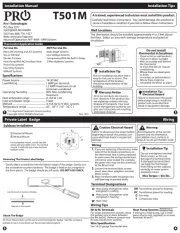
21 August 2025
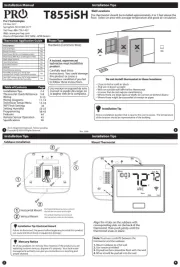
21 August 2025

21 August 2025
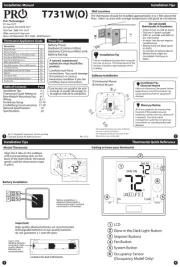
20 August 2025

20 August 2025
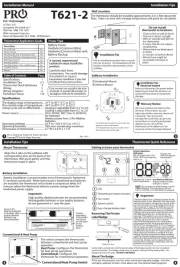
20 August 2025
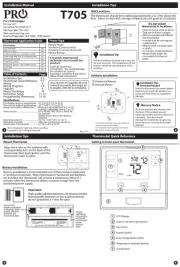
20 August 2025
Bedienungsanleitung Thermostat
- POER
- Extraflame
- Kidde
- Optima
- Tellur
- MKC
- Oregon Scientific
- Honeywell
- Vimar
- Taurus
- IR-V
- Qubino
- Ferroli
- Tado
- Basetech
Neueste Bedienungsanleitung für -Kategorien-
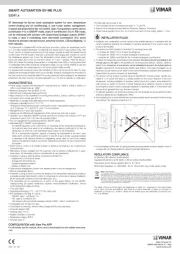
21 August 2025

21 August 2025
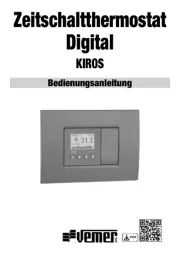
21 August 2025
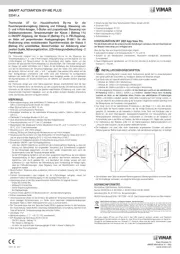
20 August 2025
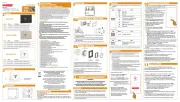
20 August 2025
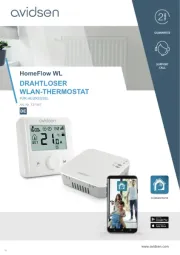
20 August 2025
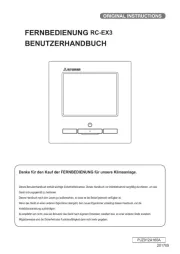
19 August 2025
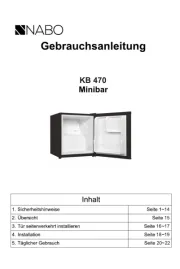
18 August 2025

14 August 2025
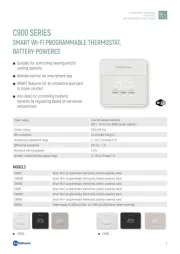
13 August 2025